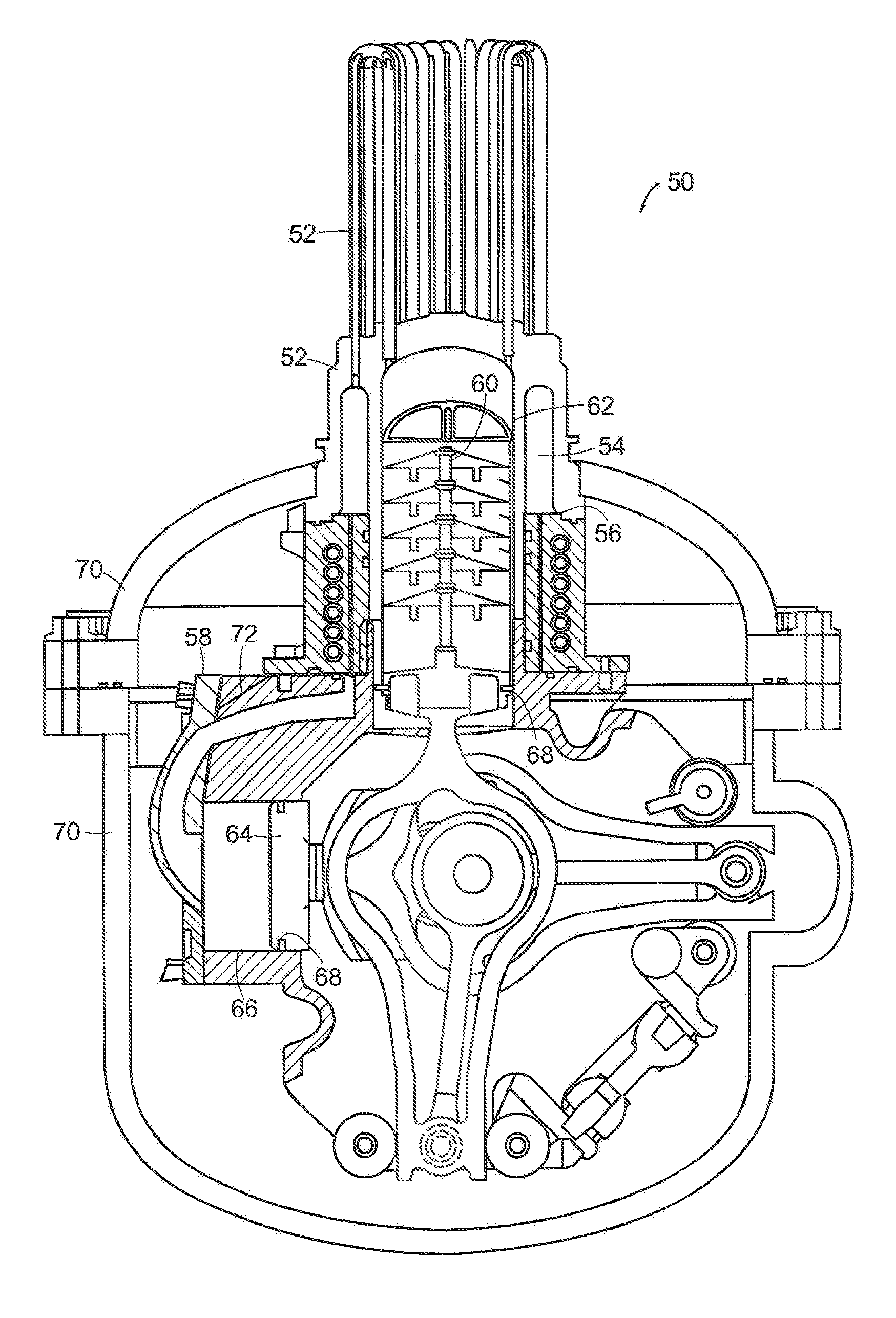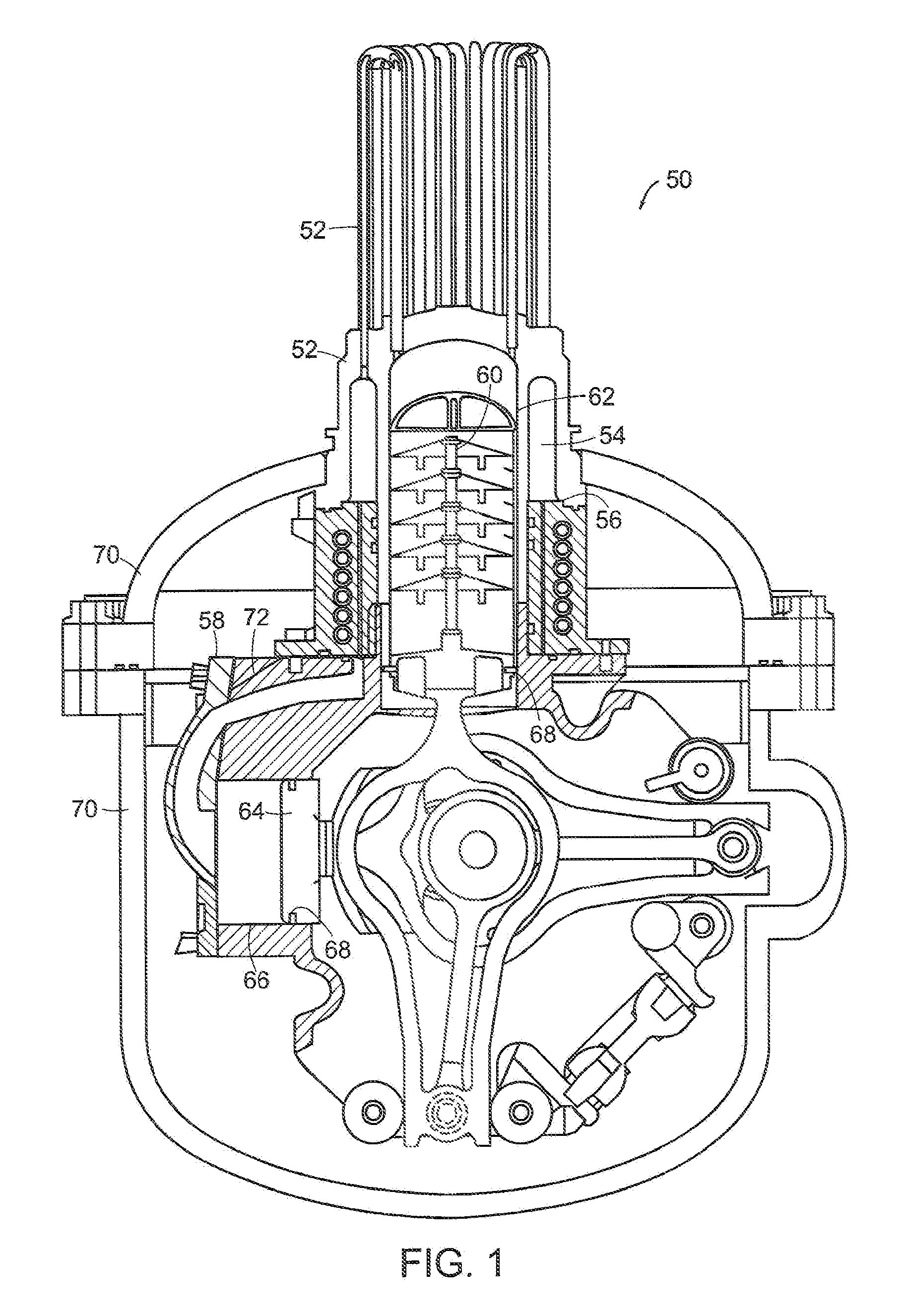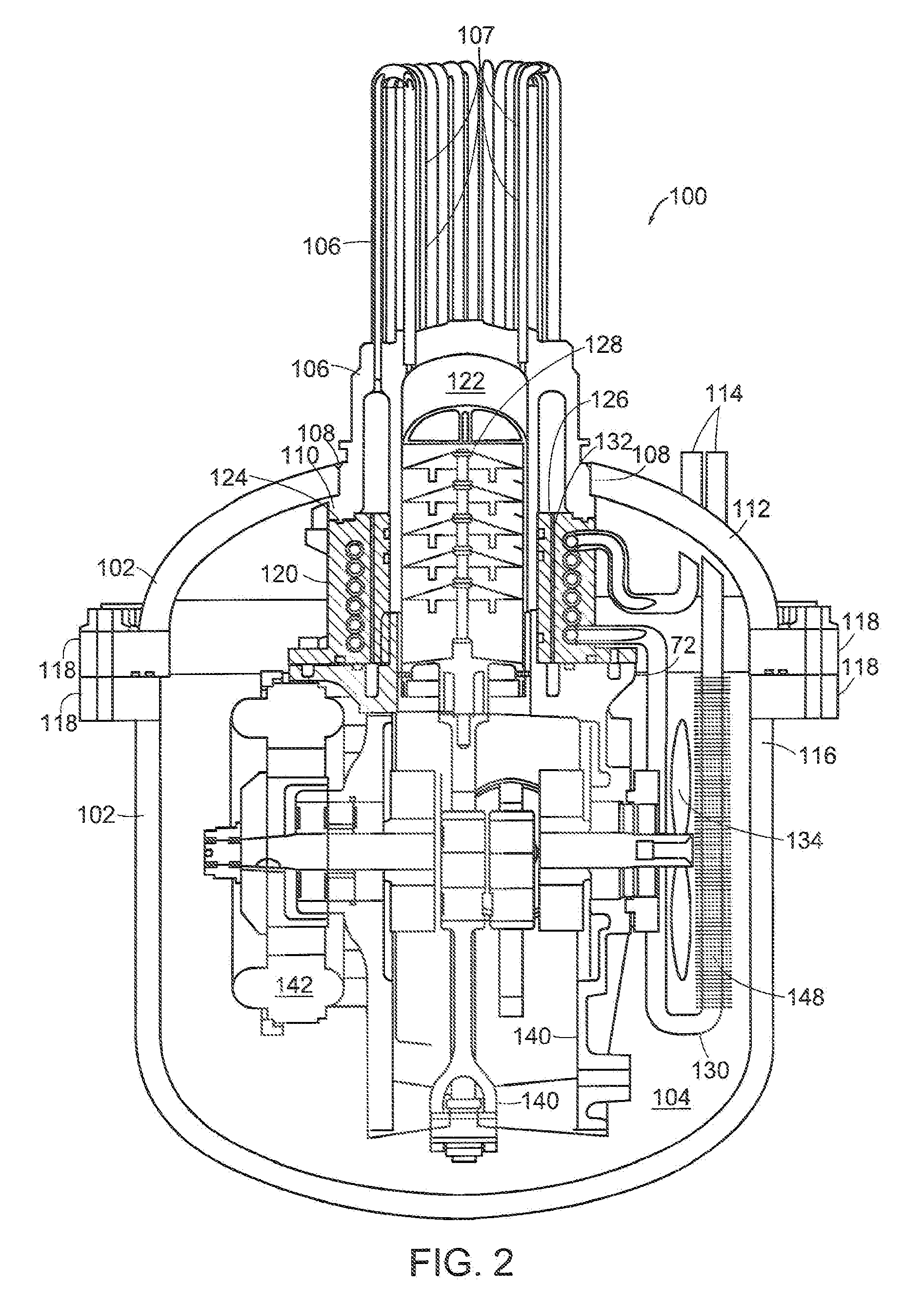Coolant penetrating cold-end pressure vessel
a technology of cold-end pressure vessel and cooling structure, which is applied in the direction of machines/engines, mechanical equipment, lighting and heating apparatus, etc., can solve the problem of limiting the maximum allowed working pressure and therefore the power of the engin
- Summary
- Abstract
- Description
- Claims
- Application Information
AI Technical Summary
Benefits of technology
Problems solved by technology
Method used
Image
Examples
Embodiment Construction
[0021]In accordance with embodiments of the present invention, the heat transfer and pressure vessel functions of the cooler of a pressurized close-cycle machine are separated, thereby advantageously maximizing both the cooling of the working gas and the allowed working pressure of the working gas. Increasing the maximum allowed working pressure and cooling both result in increased engine power. Embodiments of the invention achieve good heat transfer and meet code requirements for pressure containment by using small (relative to the heater head diameter) metal tubing to transfer heat and separate the cooling fluid from the high pressure working gas.
[0022]Referring now to FIG. 1, a hermetically sealed Stirling cycle engine, in accordance with preferred embodiments of the present invention, is shown in cross section and designated generally by numeral 50. While the invention will be described generally with reference to a Stirling engine as shown in FIG. 1 and FIG. 2, it is to be unde...
PUM
| Property | Measurement | Unit |
|---|---|---|
| pressure | aaaaa | aaaaa |
| diameter | aaaaa | aaaaa |
| pressure | aaaaa | aaaaa |
Abstract
Description
Claims
Application Information
 Login to View More
Login to View More - R&D
- Intellectual Property
- Life Sciences
- Materials
- Tech Scout
- Unparalleled Data Quality
- Higher Quality Content
- 60% Fewer Hallucinations
Browse by: Latest US Patents, China's latest patents, Technical Efficacy Thesaurus, Application Domain, Technology Topic, Popular Technical Reports.
© 2025 PatSnap. All rights reserved.Legal|Privacy policy|Modern Slavery Act Transparency Statement|Sitemap|About US| Contact US: help@patsnap.com



